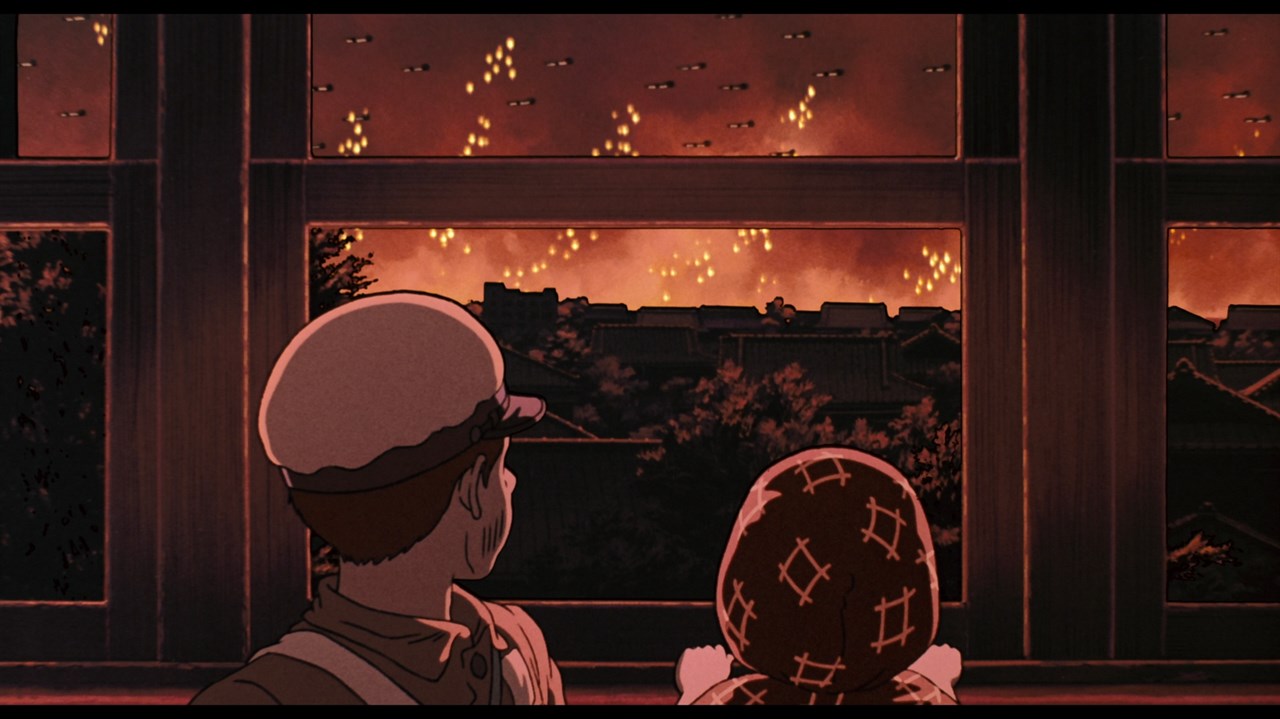Written and directed by Isao Takahata for the Shinchosha company, Grave of the Fireflies is a 1988 anime movie. This is the first film produced by Shinchosha, who hired the animation production work from Studio Ghibli.
It is an adaptation of Akiyuki Nosaka’s semi-autobiographical novel of the same name, meant as a sincere apology to the sister of the author himself. It is considered by some critics, to be one of the most powerful anti-war movies of all time.
Ernest Rister, an animation historian, parallels the film to Steven Spielberg’s Schindler’s List and states, “It is the most profoundly human animated film I’ve ever seen.” Find out more about this 1988 film hit below.

Plot
Set in Japan toward the end of World War II, Grave of the Fireflies is the sentimental tale of the relationship between two orphaned children, Seita and his younger sister, Setsuko.
In the Kōbe firebombing, the children lose their mother and their father in service to the Imperial Japanese Navy.
As a result, in the wake of widespread starvation and the utter indifference of their countrymen (some of whom are their own extended relatives), they are left alone to battle the odds.
Story Origin and Interpretations
The plot is based on a semi-autobiographic novel of the same name. The author of the novel, Nosaka, lost his sister in wartime Japan in 1945 after suffering from malnutrition.
He punished himself for her death and wrote the story to help him accept the loss and make amends to her.
Some critics have interpreted the Grave of the Fireflies as an anti-war film because of the graphic and genuinely emotional portrayal of the adverse effects of war on society and its people.
Instead of glamorizing it as a triumphant battle between opposing philosophies, the film offers an insight into Japanese society by concentrating its emphasis almost entirely on the personal struggles that wars create.

Themes and Analysis
Director Takahata consistently disagreed that the film was an anti-war movie. In his own words, it “is not at all an anti-war anime and contains absolutely no such message.”
Rather, he meant to communicate an image of the brother and sister suffering a pitiful life because of alienation from society and evoke sympathy, specifically among people in their teens and twenties.
Because the film gives the war a bit of meaning, Takahata feared that a politician could easily argue that fighting is required to prevent such atrocities.
He was doubtful, in general, that representations of suffering necessarily deter violence in similar works, such as Barefoot Gen.
After all, the director was an anti-war champion, a strong defender of Article 9 of the Japanese Constitution, and actively opposed Japan’s inclination for conformity, enabling it to mobilize against other nations.
Whenever the youth are told to fall in line, he expressed despair and fear, for it reminds him that the nation at its foundation has not evolved.

Conclusion
Rather than just trying to romanticize it as a noble battle between rival nations, the movie focuses primarily on the personal tragedies that war inevitably leads to.
It underscores that war is the inability of society to fulfill its most essential duty – to defend its people. Since it is animated and hails from Japan, Grave of the Fireflies is not the most popular work out them or even well-known.
Now that it’s available on DVD with an option of subtitles or English dubbing, maybe the recognition it deserves will be received. Sure, it’s a cartoon, and the kids have saucer-like eyes, but it has a message that crosses age barriers.
